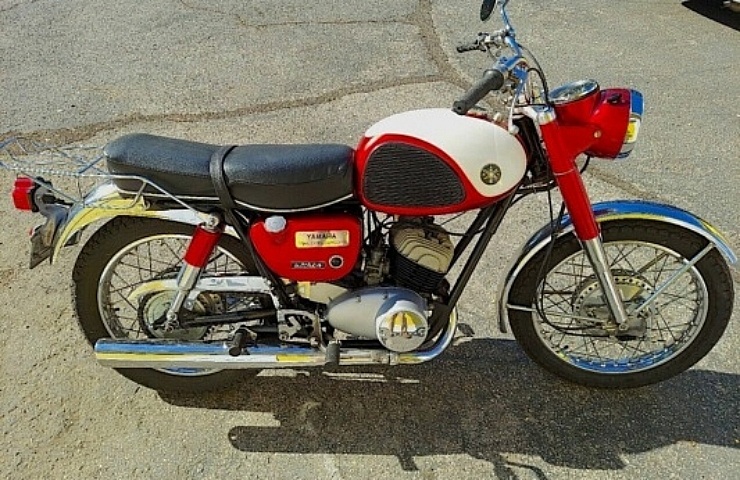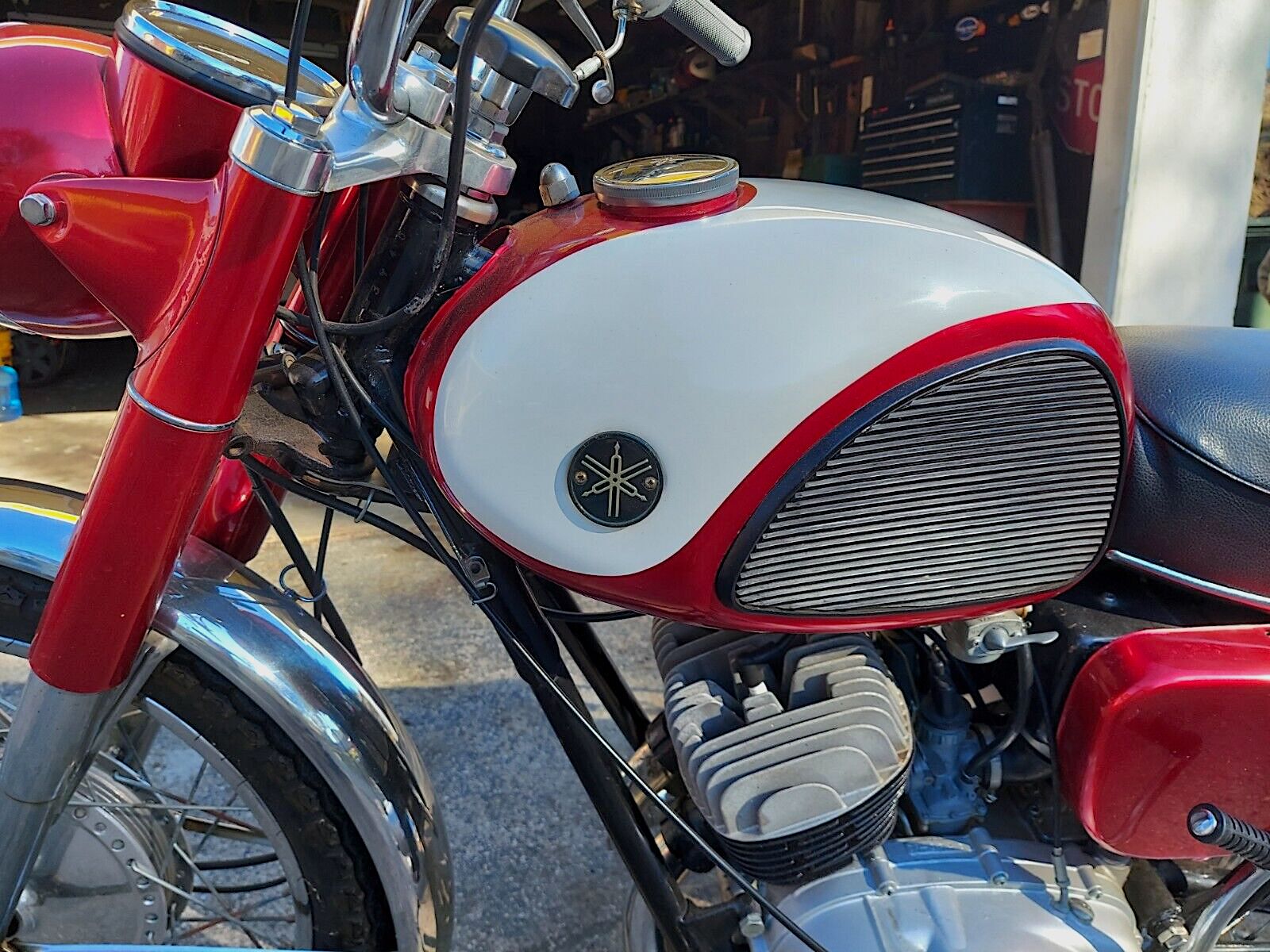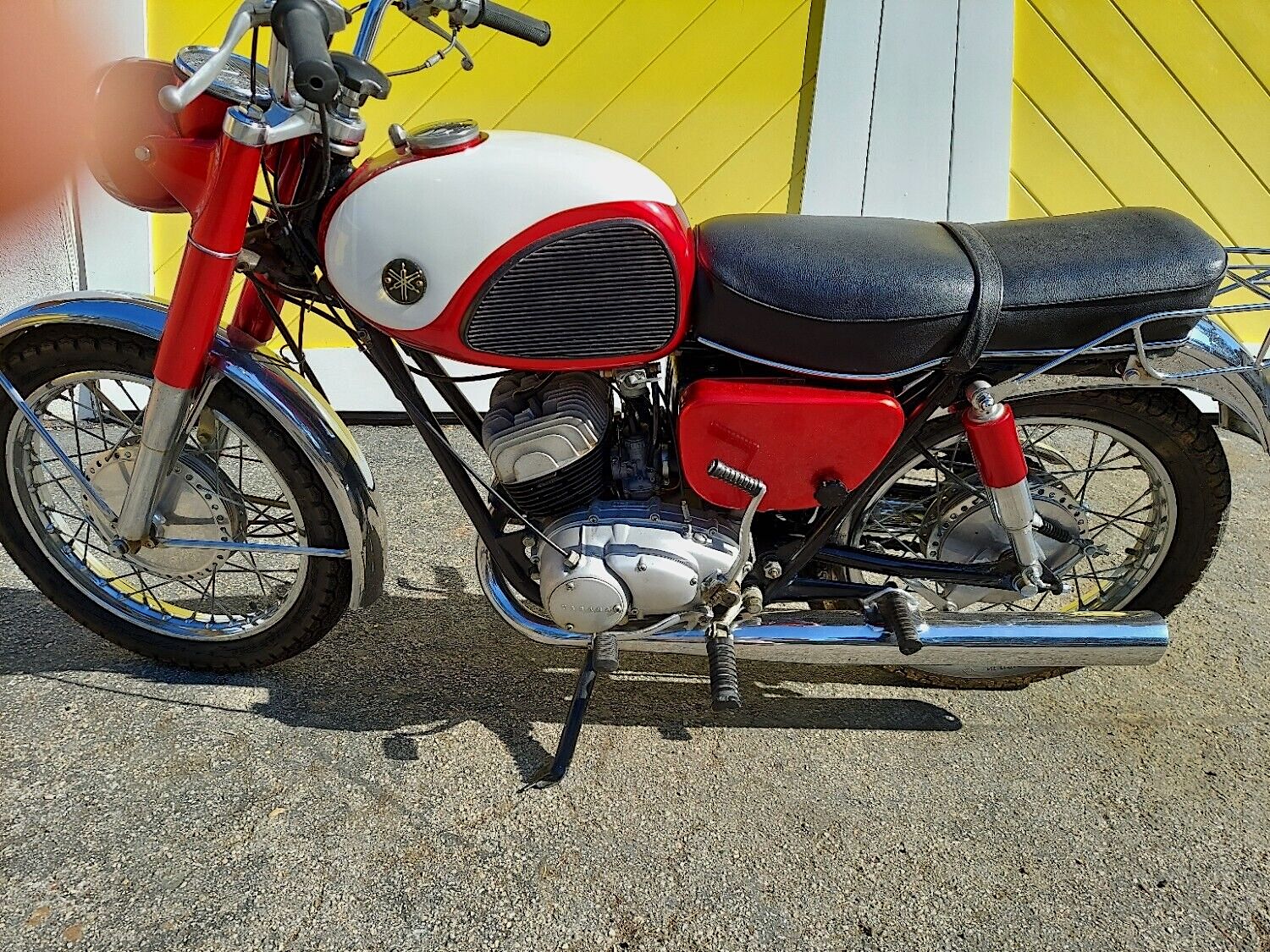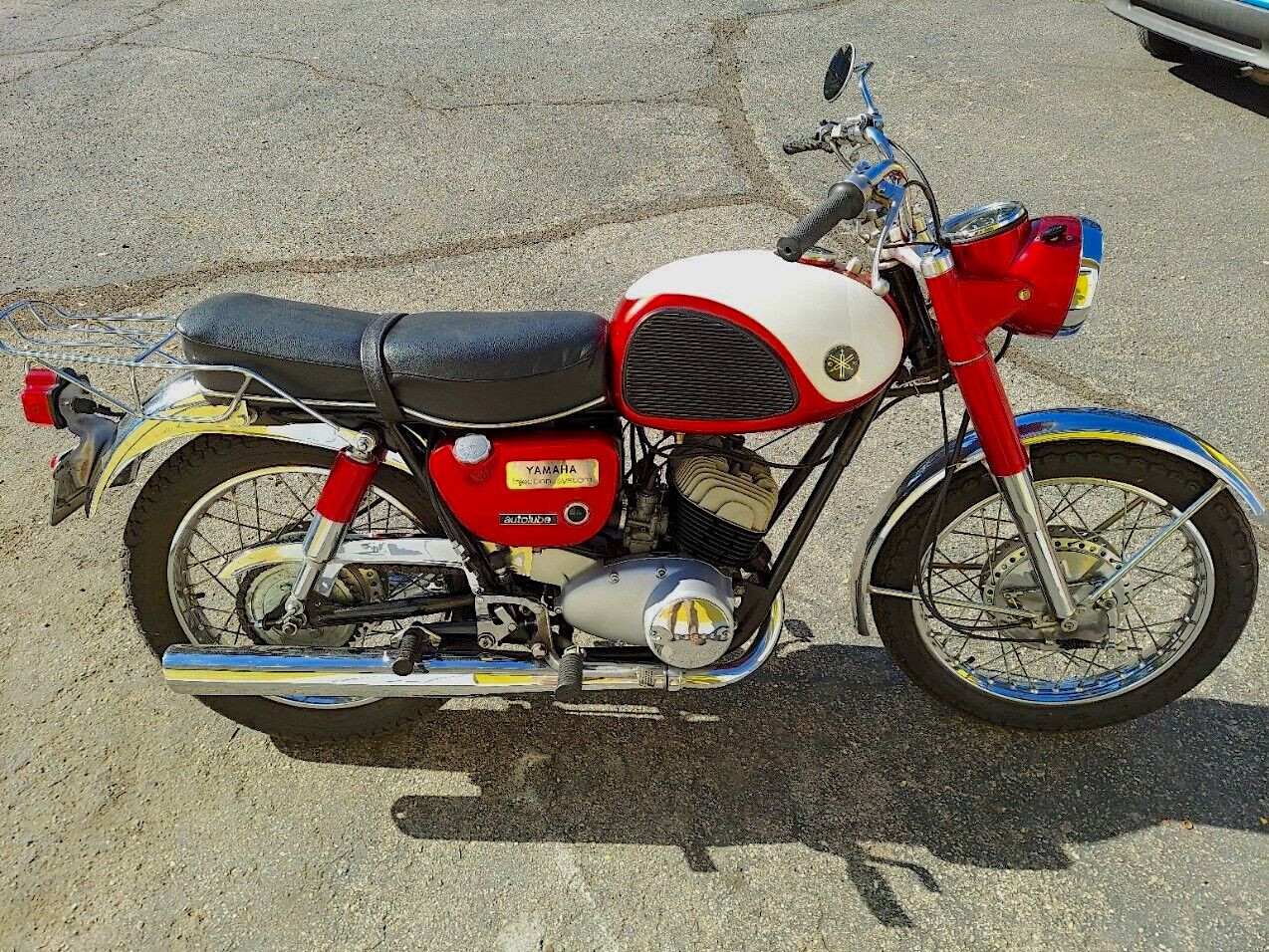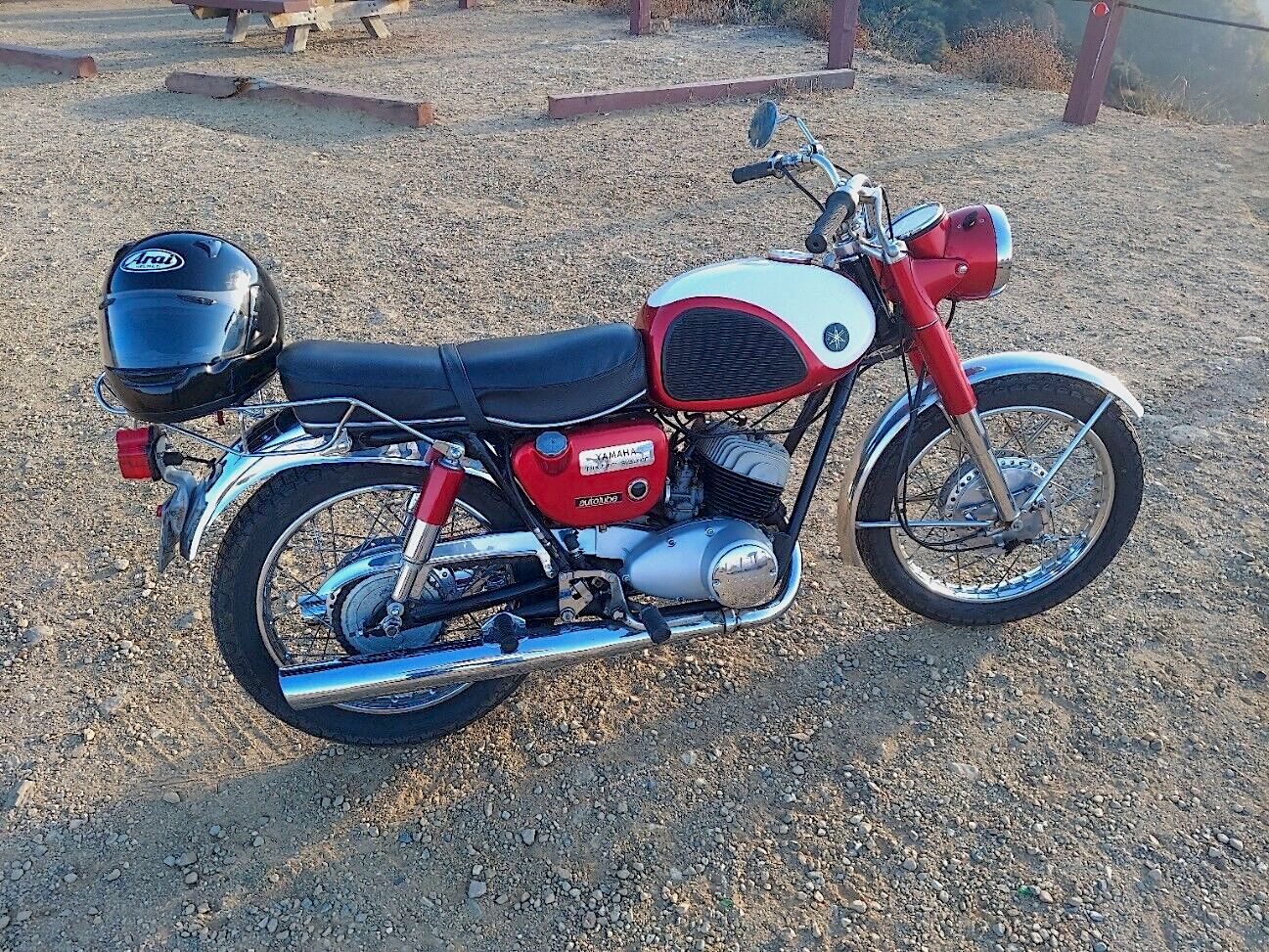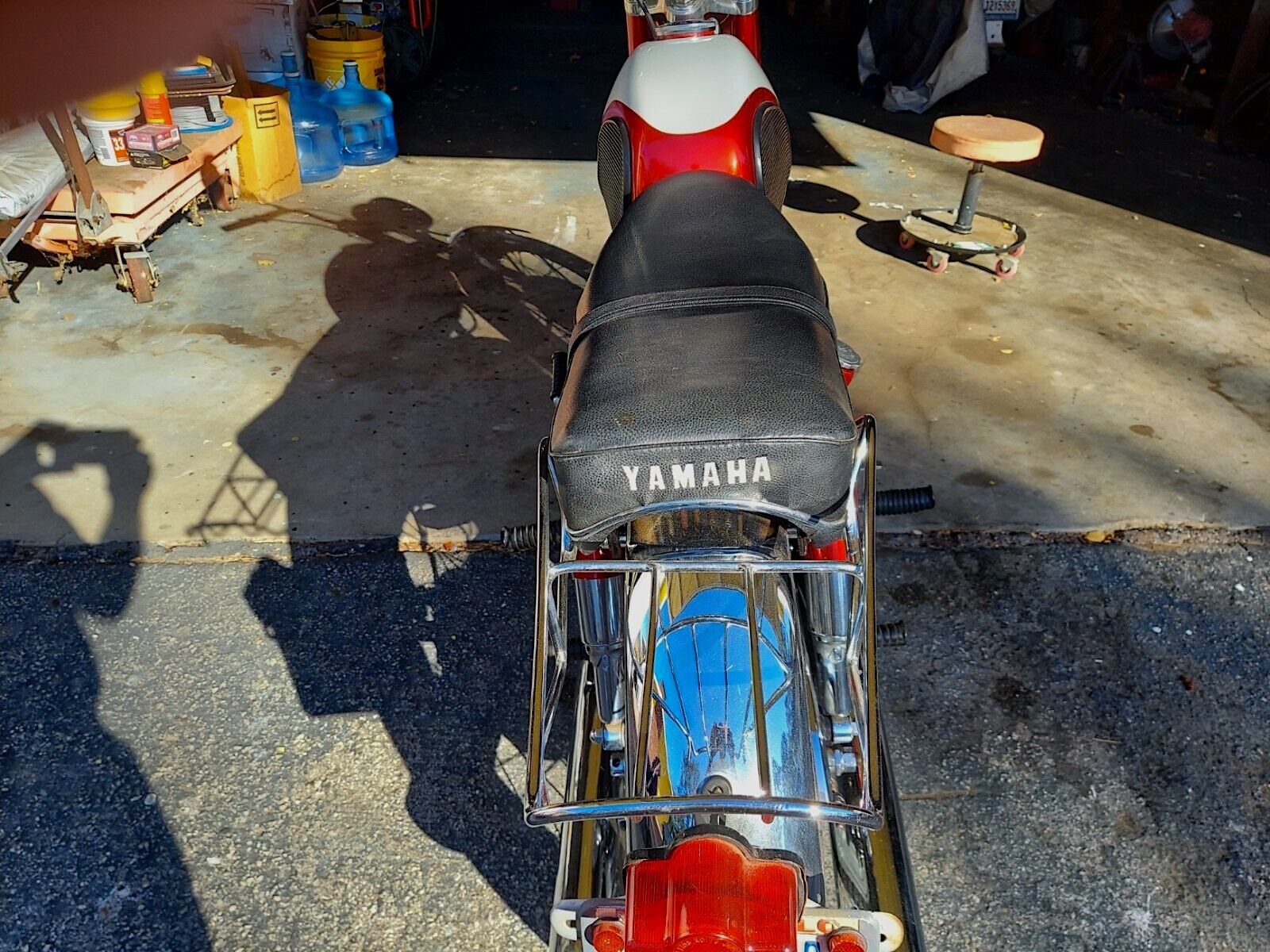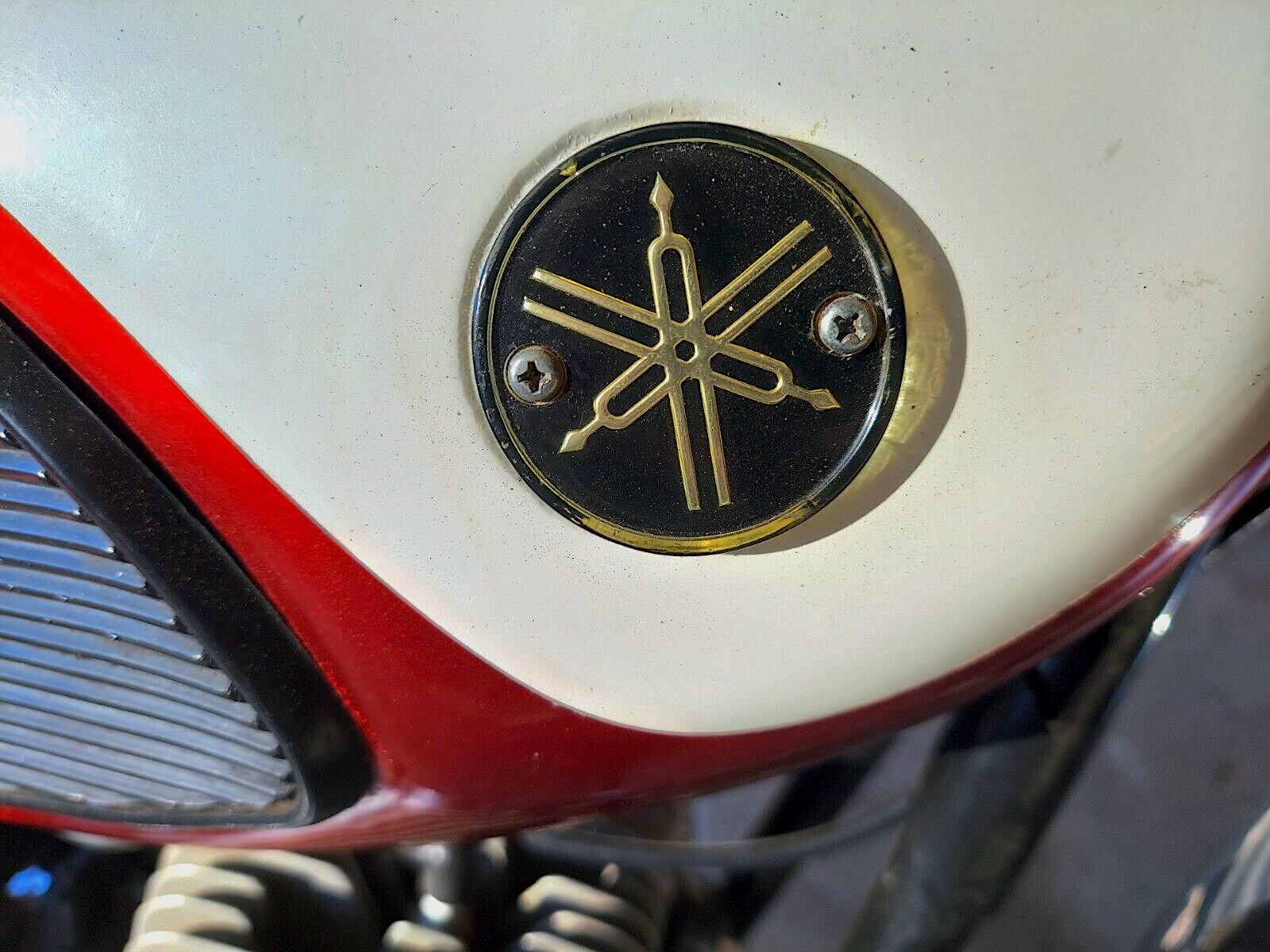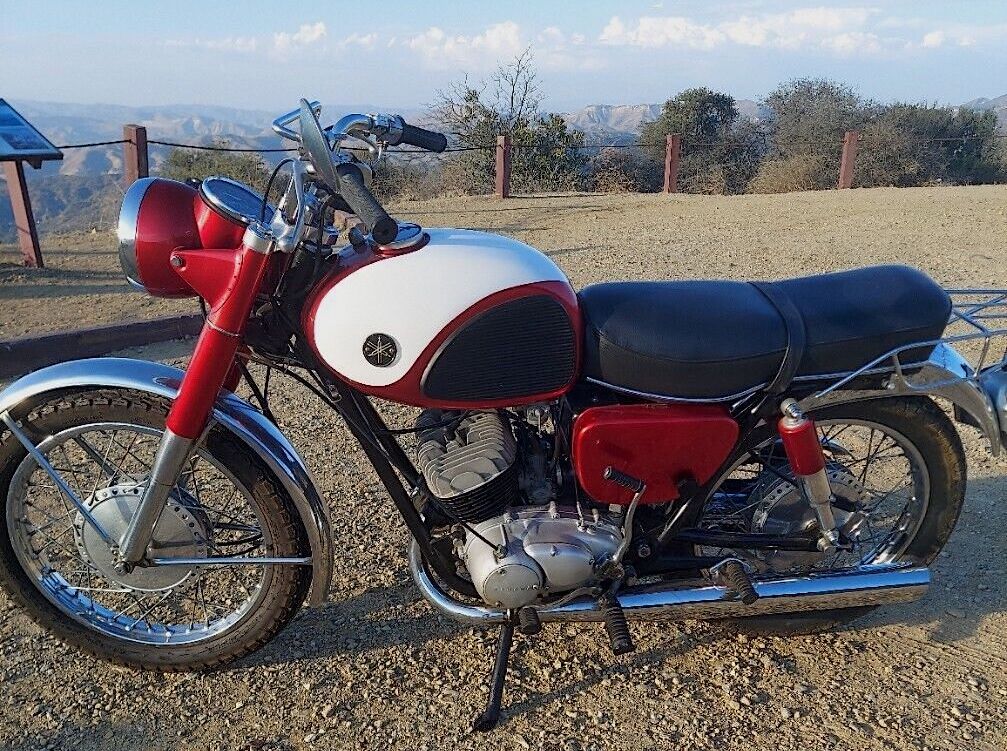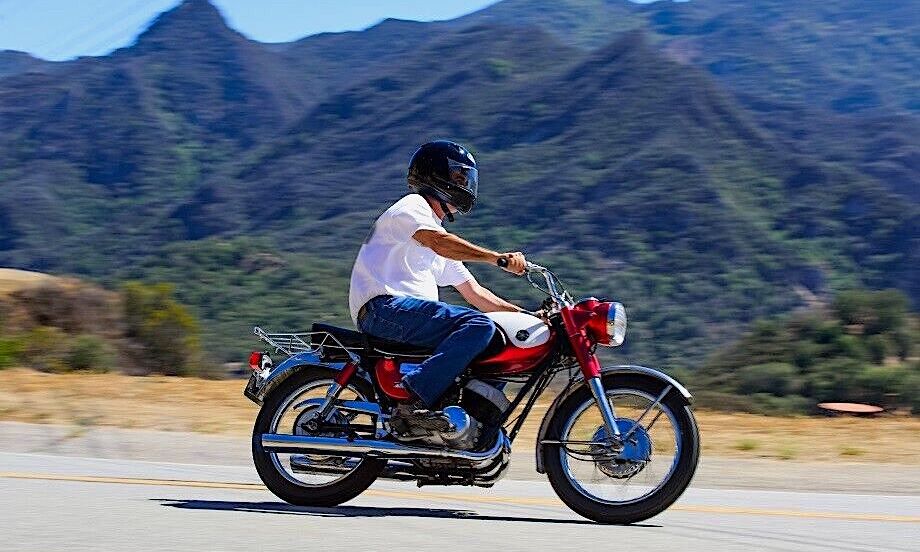Even US manufacturers took a hit as the Japanese forced their way in with some undeniably fine machines. For Yamaha, this is the bike that started it all in America.
It Needed to Be Really, Really Good
Years before Yamaha cemented itself in American motorcycle lore with world champion riders “King” Kenny Roberts and Wayne Rainey, it had to elbow its way into the US market. Honda had been present stateside since 1959, when it opened the American Honda Motor Company in Los Angeles.
As the ’60s progressed, Honda had not yet significantly impact American streets, eespite winning prestigious Isle of Man TT races.

Phil Read at the 1964 Isle of Man TT
With the 1964 250cc Grand Prix World Championship in the bag—thanks to British ace Phil Read—Yamaha was so confident in its two-stroke capabilities that it set out to build a bike to beat the Brits and carve a niche in the US market. To do this, it had to come up with a superlative machine.
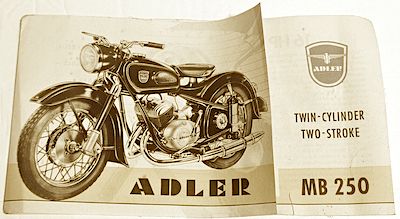
What Made the YDS3 Neat
As a two-stroke machine, the YDS3 needed to mix oil with its fuel. Riders generally resented this because it meant that at every fill-up, they had to manually measure the required amount of oil relative to the amount of fuel going in and add it to the tank. And the oil had to be carried on the bike somewhere, as did the measuring device. And if you forgot to add the oil, the motor could seize.
Yamaha solved this issue with its legendary Autolube system. Oil was stored in a small tank and meted out automatically as the bike was running. The days of pre-mixing were over, and most two-stroke bikes used a similar system for decades.
With quality of engineering and user-friendliness being key driving factors, Yamaha also added lubrication nipples to the control cables and pivot points. A luminous ignition switch cover helped you see where to put the key when riding in the dark.
Further enhancements included a revised frame, five-speed transmission, adjustable suspension, and steering dampers. A steering lock and tire pump were standard kit, as were lights in the instrument binnacle to indicate the status of the charging and lighting systems and whether the bike was in neutral.
Was It a Hit?
The Yamaha gave the US and British markets nightmares, and it was priced to make Hondas look steep. It was a home run.
Yamaha went from being virtually unheard of to producing the fastest 250cc two-stroke bike you could get. Contemporary reviewers were unanimous in their praise for the upstart Japanese machine. Yamaha parts supply was good, as was reliability. Some claimed that they were even quicker in the right environment than some British 500cc bikes.
Shop now for vintage motorcylesAs well as being a fundamentally good bike with a design focused on ease of ownership and use, it reportedly made an enjoyable and distinctive sound. The inlet and exhaust noises combine to produce an “angry wasp” effect.
All the Original Bits
If you’re a Yamaha fan or keen historian, this bike will complement your collection. It was reportedly fully restored a few years ago by a vintage two-stroke specialist. The images seem to back this up.
It still has the original tool kit, tire pump, and “everything you would have received with the motorcycle if you bought it new.”
As with the other Japanese builders, Yamaha’s contribution to American motorcycling history—on and off track—is immense. Yet, somehow, these bikes appear to be under the radar regarding value. This 1964 Yamaha YDS3 is practical, classic two-stroke motorcycling at its finest.
Shop now for Yamaha motorcycles
